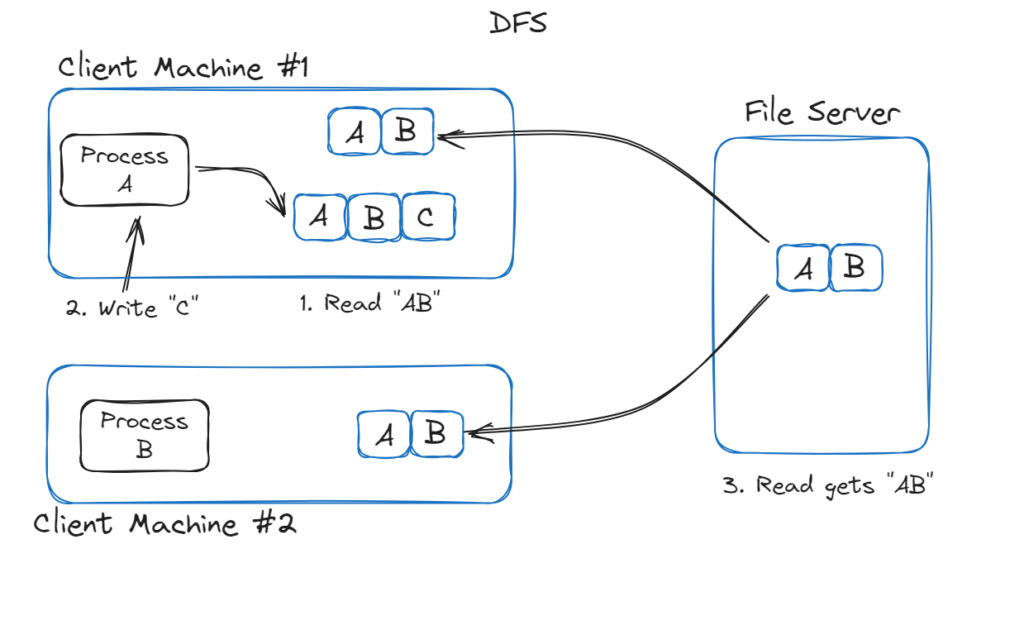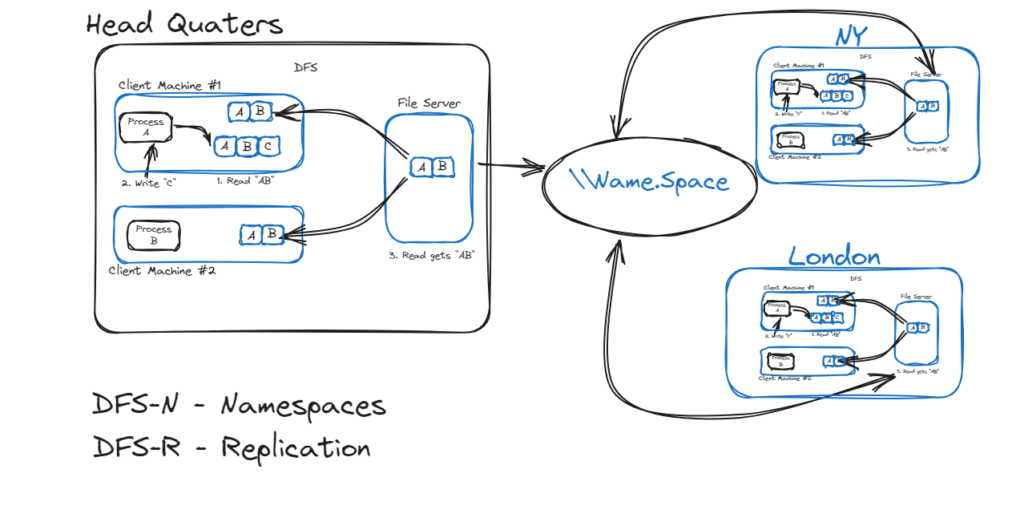
The DFS (Distributed File System) protocol is a network file-sharing protocol that allows users to access and manage files distributed across multiple servers as a single logical file system. It provides a unified view of distributed file resources to clients, making accessing files stored across different servers or locations easier.

Here are some key points to understand about DFS protocol:
- Namespace: DFS organizes disparate file resources into a common namespace, allowing users to access them through a single logical path. The DFS namespace represents the shared file system view presented to clients, hiding the underlying physical file server structure.
- DFS Root: The DFS namespace starts with a DFS root, which is the entry point to access the distributed file system. The root contains links to one or more DFS folders or targets.
- DFS Links: DFS folders or targets are known as DFS links or referrals. These links specify the actual file server and path where the files are stored. Multiple DFS links can be associated with a DFS folder, providing redundancy, load balancing, and fault tolerance.
- Access and Load Distribution: DFS supports load balancing by allowing multiple file servers to host the same content. This helps distribute the client load across servers and improves performance. Clients can also use DFS referrals to access files from the nearest or least loaded available file server.
- Fault Tolerance: In DFS, if a file server becomes unavailable, clients can still access the shared files by using alternative DFS links or referrals to other available servers. This enhances fault tolerance and ensures continuous access to data.
- Replication: DFS can replicate files across different file servers, ensuring that files remain accessible even if one or more servers go offline. Replicating files also improves data availability and reduces network traffic by serving files from a local replica.
- Scalability: DFS allows organizations to scale their file storage infrastructure by adding more file servers to the DFS namespace. Administrators can quickly expand the DFS namespace as requirements grow to accommodate additional files and users.
Overall, the DFS protocol provides a way to manage and access distributed file resources as a unified logical file system. It offers load balancing, fault tolerance, replication, and scalability features, making it efficient and convenient for clients to work with files stored across different servers or locations.